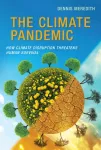(Press-News.org) A new Florida Atlantic University study on America’s urban travel trends shows important variations in travel behaviors across income, home ownership, ethnicity, gender, age, and life-cycle stages. The sixth in a series of studies compared changes in travel modes, trip frequency, trip distance and vehicle ownership among a range of socioeconomic groups using nationwide travel survey data since 1977.
The most notable trend, published in the journal Transportation Research Part D, reveals that although private automobiles continue to be the dominant travel mode in American cities, the share of car trips has slightly and steadily decreased since its peak in 2001. In contrast, the share of transit, non-motorized, and taxicab (including ride-hailing) trips has steadily increased.
The lowest income group (household income less than $25,000), who were more likely to be minorities and without cars, were heavily reliant on transit – especially buses – to fulfill their mobility needs. Their daily trip frequencies and daily miles traveled were considerably lower than those of higher income groups. Mobility challenges in this income group were more severe in small and mid-size cities, where the supply of transit is more limited than large cities.
“Examining differences in travel patterns can help policy makers to better evaluate the effects of existing transportation services and infrastructure developments, to identify the sub-groups that deserve special attention for future transport plans, and to design more sustainable and equitable transport policies at local, state and federal levels,” said John L. Renne, Ph.D., co-author, professor and director, Center for Urban & Environmental Solutions (CUES) in FAU’s Charles E. Schmidt College of Science.
Among the study findings:
Non-Hispanic whites are the most auto-oriented ethnicity group, with 81.5 percent of their trips by automobile, followed by Hispanics with 80.2 percent of their trips by automobile.
Hispanics are higher in carpooling (48 percent of their total trips), compared to non-Hispanic whites (41.3 percent).
Blacks were the highest in bus transit trips (5.8 percent), and Asians were the highest in rail transit trips (2.2 percent). Asians also had the highest share of non-motorized trips (17.7 percent); Hispanics had the lowest share of non-motorized trips (13.1 percent).
Females had slightly higher shares of automobile trips than males (80.6 percent vs. 78.7 percent); specifically, females had a higher share of carpools than males (45.2 percent vs. 39.6 percent), and males had a higher share of solo driving than females (39.1 percent vs. 35.4 percent). Males have higher shares of bicycle trips than females (1.6 percent vs. 0.7 percent).
Non-motorized trips for whites and blacks are comparable (about 14 percent), however, whites had a much higher share of cycling trips than blacks (1.3 percent vs. 0.5 percent, respectively).
Although the share of taxicab trips was comparable across different racial profiles, it was lowest among whites, at 0.5 percent.
For homeowners, from 2009 to 2017, solo driving trips decreased from 42.3 percent to 40.1 percent, and carpooling trips increased from 43.8 percent to 44.7 percent. Renters exhibited the opposite trend: solo driving trips increased from 30.5 percent to 32.1 percent, and carpooling trips decreased from 41.6 percent to 38.8 percent.
The average miles traveled per day for the lowest income group was 36 percent lower (14.3 miles vs. 19.5 miles) than the second-lowest income group ($25,000 -$49,999).
The highest income group made 31.4 percent of the total peak-hour transit trips but only 22.1 percent of the non-peak-hour transit trips; the lowest income group made only 28.7 percent of the peak-hour transit trips but 43 percent of the total non-peak-hour transit trips.
Most older adults heavily relied on driving and are not regular transit patrons, ride-hailing users, or cyclists.
Renne and Xize Yang, Ph.D., co-author, National University of Singapore, suggest many different factors may be contributing to this general trend of “peak and decline.” These include robust transit and non-motorized infrastructures in urban neighborhoods and college towns, higher gasoline prices, and the rise of online retailers such as Amazon and Uber Eats as well as shared mobility such as ride-hailing, bike and scooter sharing.
In addition, working from home and flexible working schedules have been gaining popularity. The share of Americans working from home increased from 3.3 percent in 2000 to 4.3 percent in 2009, and 5.2 percent in 2017. The researchers suggest post-covid American cities will see further increases in the share of working-from-home arrangements.
“Our study suggests that certain factors make automobile use particularly dominant in America. These include some combination of households earning more than $25,000, owning a home, owning two or more vehicles, and having children result in a strong propensity to use an automobile for the vast majority of trips," said Renne.
Researchers used the 2017 National Household Travel Survey (NHTS), which is the most recent nationally representative travel survey in the U.S. It was first released in 2018 and then updated in 2019 and 2020. They compared these variations in the 2017 NHTS with its predecessors, the Nationwide Personal Transportation Surveys (NPTS) in 1969, 1977, 1983, 1990 and 1995; and the NHTS in 2001 and 2009 based on earlier studies in this series.
- FAU -
About Florida Atlantic University:
Florida Atlantic University, established in 1961, officially opened its doors in 1964 as the fifth public university in Florida. Today, the University serves more than 30,000 undergraduate and graduate students across six campuses located along the southeast Florida coast. In recent years, the University has doubled its research expenditures and outpaced its peers in student achievement rates. Through the coexistence of access and excellence, FAU embodies an innovative model where traditional achievement gaps vanish. FAU is designated a Hispanic-serving institution, ranked as a top public university by U.S. News & World Report and a High Research Activity institution by the Carnegie Foundation for the Advancement of Teaching. For more information, visit www.fau.edu.
END
Chicago, March 1, 2023 — Sharon K. Inouye, M.D., M.P.H., Professor of Medicine at Harvard Medical School and the Milton and Shirley F. Levy Family Chair and Director of the Aging Brain Center, Marcus Institute for Aging Research at Hebrew SeniorLife has been named the editor in chief of JAMA Internal Medicine.
An internationally recognized leader in internal medicine, geriatrics, and aging research, Dr. Inouye’s research focuses on delirium and functional decline in hospitalized older patients. She is currently the overall principal investigator of the Successful Aging after ...
Chemotherapy affects the ability of a patient’s immune system to attack pancreatic tumors, a new study shows.
Led by researchers at NYU Langone Health and its Perlmutter Cancer Center, the work revolves around the immune system, which includes T cells designed to attack foreign organisms like viruses. To spare normal cells, the system uses “checkpoint” molecules like PD1 on T cell surfaces to turn off their attack when they receive the right signals. The body also recognizes tumors as abnormal, but cancer cells ...
Transgender men can, and often wish to, become pregnant. However, they do need extra guidance and care providers often lack the necessary knowledge and skills. Amsterdam UMC is the first to conduct qualitative research into the experiences of Dutch transgender people with maternity care. This research is now avaliable as a pre-print in Midwifery.
Transgender men often undergo medical procedures to adjust their bodies to their male gender identity. These medical interventions can affect fertility. Some transgender men therefore choose not to undergo these treatments, postpone them or, even, to temporarily stop them. ...
A study just published in the American Journal of Clinical Nutrition (AJCN) explored the role of omega-3 fatty acids, especially EPA and DHA, and whether they might be protective against contracting and/or suffering adverse outcomes of COVID-19 infection.
The study compared the risk for three COVID-19 outcomes: 1-testing positive, 2-hospitalization, and 3-death as a function of baseline plasma DHA levels.
DHA levels (% of total fatty acids) were measured by Nuclear Magnetic Resonance (NMR) spectroscopy but were converted to Omega-3 Index (red blood ...
Certain diseases, including Alzheimer’s, are currently considered “undruggable” because traditional small molecule drugs can’t interfere with the proteins responsible for the illnesses. But a new technique that specifically targets and breaks apart certain proteins — rather than just interfering with them — may offer a pathway toward treatment. Researchers reporting in ACS Central Science have, for the first time, designed a compound that targets and breaks down a posttranslationally modified protein closely associated with Alzheimer’s disease.
Researchers have been exploring targeted protein degradation (TPD) as a way to get at ...
Wastewater can provide clues about a community’s infectious disease status, and even its prescription and illicit drug use. But looking at sewage also provides information on persistent and potentially harmful compounds, such as per- and polyfluoroalkyl substances (PFAS), that get released into the environment. Now, researchers in ACS’ Environmental Science & Technology Letters report an unexpected source of these substances in wastewater systems — toilet paper.
PFAS have been detected in many personal care products, such as cosmetics and cleansers, that people use every day and then wash down ...
PULLMAN, Wash – Glacier National Park is home to around 50 Canada lynx, more than expected, surprising scientists who recently conducted the first parkwide occupancy survey for the North American cat.
The Washington State University-led survey reveals the iconic predator resides across most of Glacier’s 1,600 square-mile landscape, although at lower densities than in the core of its range further north.
“The population in the park is still substantial and exceeded our expectations,” said Dan Thornton, WSU wildlife ecologist ...
The United States Patent and Trademark Office has awarded Fraunhofer USA with a patent for algorithms that detect and quantify air leakage from single-family homes using data from commercially available communicating, thermostats.
Outdoor air can infiltrate homes through many pathways, including windows and doors, poorly sealed connections between exterior walls and basements and attics, and unsealed wall, floor, and ceiling penetrations in occupied spaces. Prior field studies have found that most homes have appreciable air leakage, which accounts for approximately a quarter of space conditioning energy consumption. Not only can air leakage significantly increase home energy consumption, ...
A new book, The Climate Pandemic: How Climate Disruption Threatens Human Survival, concludes that humans will not survive the unrelenting onslaught of climate disruption. The e-book is available free on Amazon March 1-5.
“As horrific as the COVID-19 pandemic has been, its effects pale in comparison to the coming catastrophe from climate disruption,” wrote author and veteran science writer Dennis Meredith. “In fact, the climate pandemic will steadily worsen, even bringing our species to extinction, unless we launch a global revolution to abandon our carbon-dependent energy system.
“Given the evidence in this book, I see only a vanishingly small possibility of ...
CHAMPAIGN, Ill. — A new book from University of Illinois Urbana-Champaign anthropology professor Kathryn Clancy takes an unflinching look at the many ways humans have struggled – and often failed – to understand one of the greatest mysteries of human biology: menstruation.
In “Period: The Real Story of Menstruation,” Clancy first focuses on the myriad ways human societies, their leaders, scientists and health practitioners have gotten it wrong – from myths and taboos about the purpose and health effects ...




